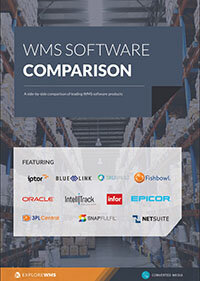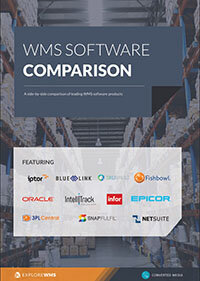Three signs it’s time to change WMS vendors
The complexity of the modern warehouse demands a robust system to manage it, but many business leaders find themselves looking for workarounds, paying increased fees, or using other software to control operations when their warehouse management system can’t keep up.
Striking the balance between maintaining your existing system and adopting a WMS replacement can be difficult because of the time and money involved in any switch. This guide looks at three of the biggest WMS concerns that should signal it’s time to change to a new WMS vendor.
1. Your WMS isn’t keeping up with the Joneses
Warehouse operations are changing in significant ways both due to internal pressures and shifts in overall business models. The growth of e-commerce and options such as drop shipping are putting new pressures on inventory management, margin control, and regulatory compliance.
Recommended reading: line up potential replacement WMS vendors with our WMS comparison guide
WMS replacement should always look at long-term architecture growth and support so that you’re not buying a system that’s inflexible. Work with your WMS vendor to see how much their systems can adapt and control.
Many companies consider WMS replacement when they realize that more and more of their warehouse operations are being controlled by other systems, manual processes, or aren’t able to use technology like the latest radio frequency speeds.
2. Your WMS is restricting growth
How much time does it take to add a new product to your WMS? When you need support for a technical issue, is the cost rising or is harder to find help? Are you easily able to change or add new operational processes?
You can do a quick growth audit of your WMS and brand by answering those three questions. If your WMS is difficult to adapt to your business, you might benefit from finding a WMS replacement that’s designed for businesses like yours. And if new functions or operational improvements are hard to initialize—or the coding only seems to come from your in-house teams—then your WMS vendor might be signaling that it has a very limited development plan.
You might end up spending more of your money to make their system better.
And, if it’s increasingly difficult to get assistance and support for your WMS, it could be one of the first signs that your WMS vendor is on the way out. A third-party will spend time supporting WMS vendors and software that are growing; their abandonment might be a sign that the industry and your competition are already starting to look for a WMS replacement.
3. You’re getting hit with maintenance or increasing WMS fees
When WMS vendor starts charging you additional fees or makes you pay for maintenance not related to hardware upkeep, there’s an opportunity to save money with a WMS replacement.
Increases in fees without service improvements or expansions are a warning sign. These show that a WMS vendor is trying to squeeze more money out of existing subscribers, likely signaling that they’re struggling to gain new clients.
You need your WMS vendor to be there for you in the future. The WMS market is consolidating and shifting to new business models, so it’s smart to be wary of any vendor who has a shaky financial situation.
Your partners always want to know that you’ll be financially viable in the future. It’s smart business for you to demand the same.
Free white paper

WMS comparison guide
Your hand-picked comparison of leading WMS software vendors.

Featured white papers
Related articles
-

How much WMS software costs and how to set your budget
A complete guide to WMS costs, and how to calculate your budget based on these
-

Mission-critical features of food lot traceability software
What features of food traceability software will help you during a food recall
-

Here's your complete WMS modules and features checklist
All the features and modules you might need in your WMS - perfect for requirements gathering



